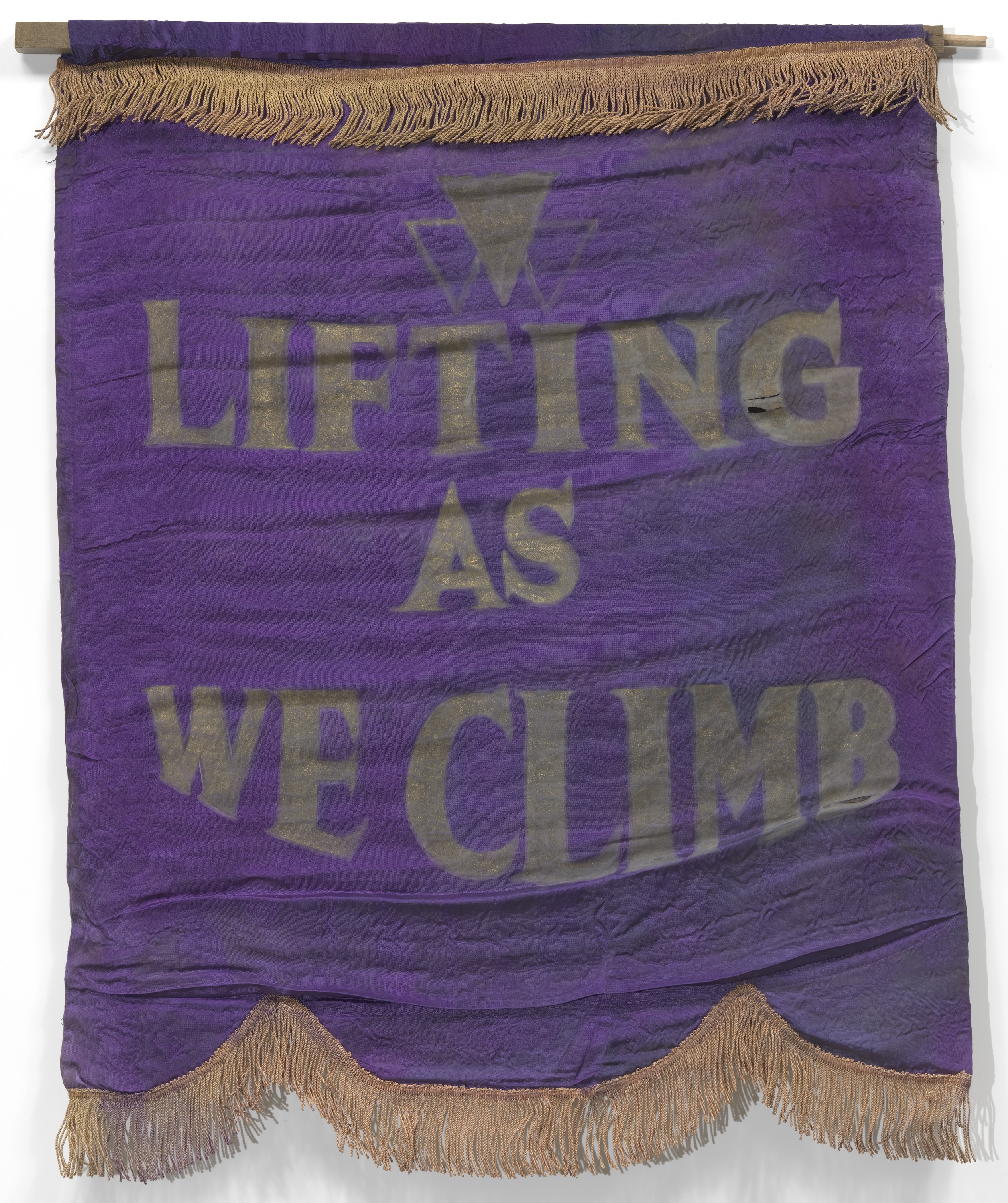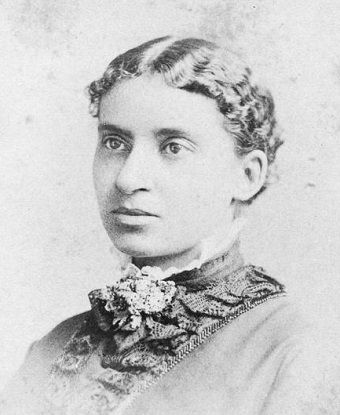A purple silk banner with gold fringe and the National Association of Colored Women’s Clubs' motto (1910)
Charlotte Forten Grimké helped found The National Association of Colored Women's Clubs

Topics on the Page
Women's Roles in the Civil War
Historical Biography
CROSS-LINK: Women and the Civil War
Post War Changes
Historical Biography: Elizabeth and Emily Blackwell, First Women in Medicine
- Charlotte Forten Grimké
The Invention of the Typewriter and Women's Roles in Offices
Teaching and Learning Resources
![]() Cross-Links
Cross-Links
Women's Roles in the Civil War
"Our Women and the War" by Winslow Homer. From Harper’s Weekly, September 6, 1862

Background information on Women's Roles during the Civil War
Information on Roles at Home during the war.
Breaking Down Boundaries: Women of the Civil War article
- Here's a four minute video on the role of Women during the Civil War, including as soldiers.
- Here's a "Sound Smart" video from the History Channel on Women in the Civil War.
![]() Women's Diaries during the Civil War from women involved in the war.
Women's Diaries during the Civil War from women involved in the war.
Post-War Changes
After the devastation of the Civil War, women were not so eager to go back to the societal expectation of what a woman should be, instead taking on more traditionally male roles and occupations.
Overview on Post-Bellum Changes
A resource collection on Women and The Reconstruction
Here is a Crash Course video on Women's Suffrage which also involves women's roles after the Civil War.
Harriet Tubman

Harriet Tubman was a major figure during Civil War and Reconstruction, as she is one of the main figures associated with The Underground Railroad
Video on new information about Tubman
Article from the National Archives on the shift from slave women to free women post-war.
Here is a "Drunk History" video on Harriet Tubman's history as a spy for the Union Army.
Charlotte Forten Grimké

Charlotte Forten Grimké was born to free parents in 1837. She was a part of the black elite and was educated by private tutors.
In the 1850s, she became involved in the abolition movement and began publishing in The Liberator. She taught emancipated slaves on the Sea Islands of South Carolina and chronicled her time there.
This publication built support from white people to help poor and emancipated families have necessary materials while also raising money for black schools in the South.
In 1896, she helped found the National Association of Colored Women.
![]() Click here to read part one of Life on the Sea Islands published in The Atlantic Monthly.
Click here to read part one of Life on the Sea Islands published in The Atlantic Monthly.
![]() Click here for a two minute cartoon video on her life as the first African American student amongst white students in Massachusetts, the first African American to teach free slaves in the South, and as a lifetime abolitionist
Click here for a two minute cartoon video on her life as the first African American student amongst white students in Massachusetts, the first African American to teach free slaves in the South, and as a lifetime abolitionist
Secretary at typewriter 1912

![]() The Invention of the Typewriter and Women's Roles in Offices
The Invention of the Typewriter and Women's Roles in Offices
The Invention of the Typewriter
A Guide to Doing History with Objects: Women and the Typewriter
How the Typewriter Got Women into the Office
Nine Striking Facts about the History of the Typewriter
![]() Learning Resources
Learning Resources

Presentation on Pre-and Post-War roles for women
Here is a lesson plan for grades 6-12 on women in the civil war using primary sources
Here is a lesson module on women's suffrage in the United States.